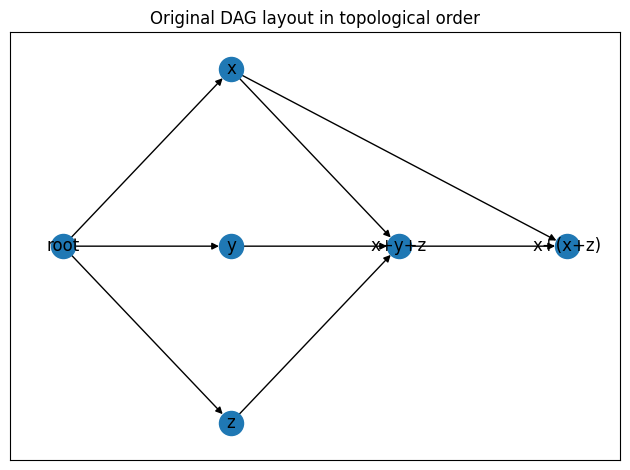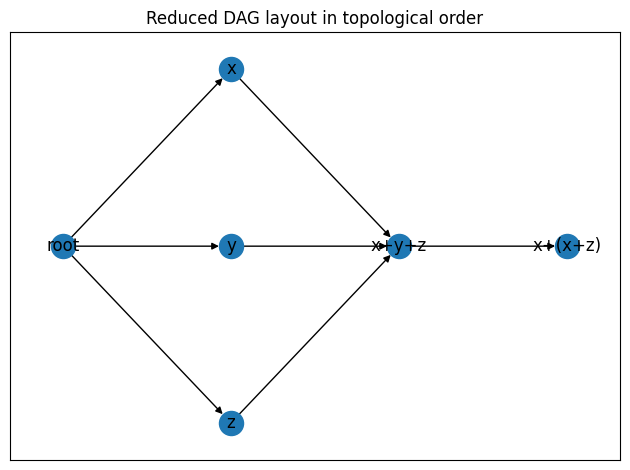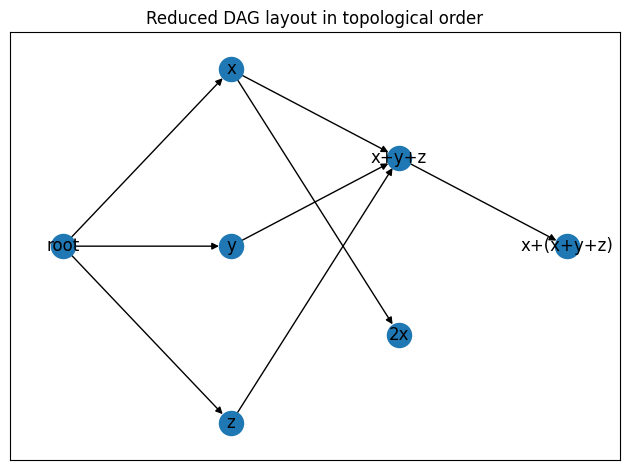AWS Step Functions and DAG

Oh DAG!
Direct acyclic graph, DAG, is a popular data structure to organize large scale computation. because it allows you to represent the dependencies between different tasks in a clear and efficient manner. DAGs are commonly used in data processing, scientific computing, and machine learning applications to manage complex workflows.
Here are some key reasons why DAGs are useful for managing computation:
- Clear representation of dependencies: A DAG clearly shows the dependencies between different tasks, making it easy to understand which tasks must be completed before others can begin.
- Efficient scheduling: With a DAG, it’s easy to schedule tasks in the most efficient way possible. By prioritizing tasks based on their dependencies, you can ensure that each task is executed only when its input data is available, which minimizes unnecessary waiting times.
- Parallelism: DAGs can also be used to identify opportunities for parallelism, which can significantly speed up computation. Tasks that don’t have dependencies can be executed in parallel, making better use of available resources.
- Incremental computation: DAGs can be used to efficiently perform incremental computations, where only the necessary parts of a computation are re-run when new data becomes available. This can save a significant amount of time and resources compared to re-running the entire computation from scratch.
Overall, DAGs are a powerful tool for managing complex computations, enabling efficient scheduling, parallelism, and incremental computation, all while providing a clear representation of dependencies between tasks.
As we can see, with DAG we can significantly parallelize our computations and the power of DAG let us to do fearless concurrent computation which fits in the serverless land very well.
Existing DAG Based Engines
There are several libraries and frameworks that use DAGs for managing computation. Here are some examples:
- Apache Airflow: Apache Airflow is a popular open-source platform for managing workflows and data pipelines. It uses DAGs to represent the dependencies between tasks, and provides a rich set of tools for scheduling, monitoring, and executing tasks.
- Dask: Dask is a Python library for parallel computing that uses DAGs to represent computation graphs. It provides a flexible framework for executing parallel and distributed computations on large datasets.
- TensorFlow: TensorFlow is a popular machine learning library that uses DAGs to represent computation graphs. It allows users to define complex machine learning models as a series of interconnected nodes, with each node representing a mathematical operation.
- Luigi: Luigi is an open-source Python package for building data pipelines. It uses DAGs to represent the dependencies between tasks, and provides a flexible framework for scheduling and executing tasks.
- Spark: Apache Spark is a popular distributed computing framework that uses DAGs to represent computations. It provides a powerful set of tools for parallel and distributed processing of large datasets.
- These libraries and frameworks are just a few examples of the many tools that use DAGs to manage computation. By using DAGs, these tools can provide a clear representation of dependencies between tasks, efficient scheduling, and parallelism, which can make it easier to manage complex workflows and large datasets.
There are also some libraries, such as Incremental (JaneStreet), Man MDF (Man Group), loman, anchors, etc. More details please check: https://wangzhe3224.github.io/awesome-systematic-trading/#computation-graph
Schedule The DAG
Apart from describe the computation, another important aspect of using DAG for
computation is the runtime or scheduling runtime.
There are different ways to schedule DAG computation based on the nature of the tasks, available resources, and performance goals. Here are some examples of scheduling strategies:
- Serial scheduling: In this approach, tasks are executed in a sequential manner, one after the other. This is the simplest scheduling strategy and may be appropriate for small DAGs with a small number of tasks and dependencies.
- Parallel scheduling: Tasks are executed concurrently, taking advantage of multiple processors or threads. Parallelism can be used when tasks are independent or can be executed in parallel without interfering with each other. This can speed up computation significantly and is a common strategy for large-scale computations.
- Topological ordering: A topological ordering of the DAG is a linear ordering of the nodes such that if there is an edge from node A to node B, then A comes before B in the ordering. This ordering can be used to schedule tasks, with tasks at the beginning of the ordering executed first, followed by tasks later in the ordering.
- Dynamic scheduling: In this approach, tasks are scheduled at runtime based on the availability of data and resources. This can be useful when the execution time of tasks is uncertain or when new tasks are added to the DAG at runtime.
- Batch scheduling: In this approach, tasks are grouped into batches, and each batch is executed in parallel. Batching can be useful when the DAG contains a large number of tasks and parallelism can be used to speed up computation.
- Pipeline scheduling: In this approach, tasks are divided into stages, and each stage is executed in parallel. Each stage can have its own set of dependencies and resources, allowing for efficient use of available resources. This approach is commonly used in data processing and machine learning applications.
These scheduling strategies can be combined in different ways to optimize performance and resource usage for a given DAG. The choice of scheduling strategy depends on the characteristics of the DAG and the available resources.
Can DAG Go Serverless?
Yes. As we discussed, there are two parts in computation with DAG: computing and scheduling. Computing is the bread and butter of serverless, we have Lambda or Fargate. However, scheduling is not that straightforward.
As shown above, most of the DAG based computation engine, such as Spark, we need a long running session to coordinate the computation. This long run session need to handle the scheduling of the jobs and handling the intermediate results.
Serverless is not very good at long running tasks. Luckily enough, AWS provides a workflow service: Step Functions.
Step Functions is not a service designed for DAG computation, however we can make it our DAG scheduling engine with a bit efforts.
Topological Order
Say for example, I have following DAG:

First of all, we get the topological order of the DAG as show above.
With this order, the jobs are organized to several layers, for example, root node
is at layer 0, xyz are in layer 1, etc.
Transitive Reduction
Notice that there is a dependency from x to x+(x+z) node, which is a dependency
goes across two layers. This is not good! Because Step Function do not support this
kind of workflow. However, if we look at it closely, this dependency is redundant
in this setup, because by the time we reach x+(x+z), x is guaranteed fulfilled.
This is called transitive reduction, meaning G = (V,E) is a graph G- = (V,E-) such that
for all v,w in V there is an edge (v,w) in E- if and only if (v,w) is
in E and there is no path from v to w in G with length greater than 1.
So we can reduce the graph:

This is nice and clean now and we can use Step Function to express this DAG now.
Pass Parameters
Transitive reduction is good, however there are some node missing input information.
For example, x+(x+z) can never know it need to read x.
Using Step Functions to schedule DAG is a static scheduling, meaning we know exactly the execution order, so we can encode the input and output into the config statically before running the DAG, see input and output of AWS Step Function for details.1
Intermediate Results
The next piece is how can we manage the intermediate results?
There could be many serverless solutions. For example, we can use S3. If we care more about the latency, we can use ElasticCache.
General Lambda
The last piece is what’s actually in the Lambda Invoke job in the Step Function workflow?
This function should know how to load parameter from the intermediate store (previous step), then should also know which function to call to compute the result, and at last store the output to the store.
Here is some demo code:
store = S3Store(bucket="some-bucket")
path = "store/"
def handler(event, context):
"""
Event example:
{
"component_name": "HistDataLoader",
"component_config": {
"symbol": "ETHUSDT",
"freq": "5m",
"lookback": 1,
"type": "future"
},
"args": null,
"kwargs": null
}
"""
component_name, config, args, output = event['component_name'], event['component_config'], event['args'], event['output']
_cls = getattr(components, component_name)
obj = _cls(**config)
if args is None:
res = obj()
else:
argv = []
for arg in args:
d = store.read(f"{path}{arg}")
argv.append(d)
res = obj(*argv)
store.write(f"{path}{output}", res)
return {
"output": f"{path}{output}"
}
Potential Issues
Some times, how to arrange the jobs in different layer is not straightforward. Take following graph for example:

node 2x only depends on x, however, if we follow the standard compilation method,
2x can only be executed after all xyz nodes finished.
Another way to schedule 2x is to put it into the same layer of xyz, so that
2x executed immediately after x is done. However, in the way, we are risking
slow down the computation of the whole next layer. For example, if 2x is a very
expensive computation in terms of time, it is better to schedule it in the next layer.
Take it further, event 2x is scheduled in the next layer, the long computation
delay problem is not resolved but just pus the delay a bit further.
Fundamentally, if we cannot predict the runtime of each job, workflow approach will suffer this type of issue.
In order to solve this potential issue, a dynamic scheduling is required, whereas essentially workflow is a static scheduling.
I will leave that with another post.